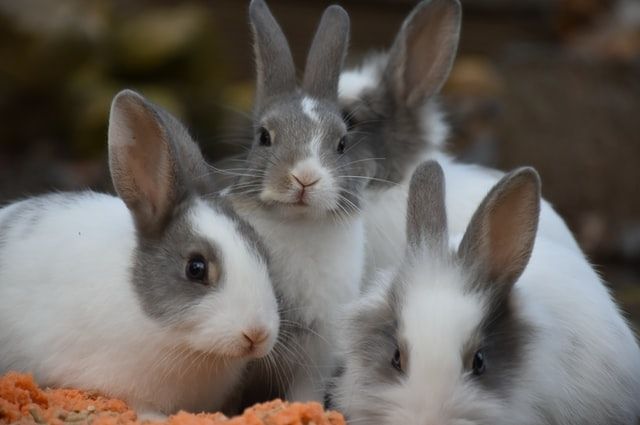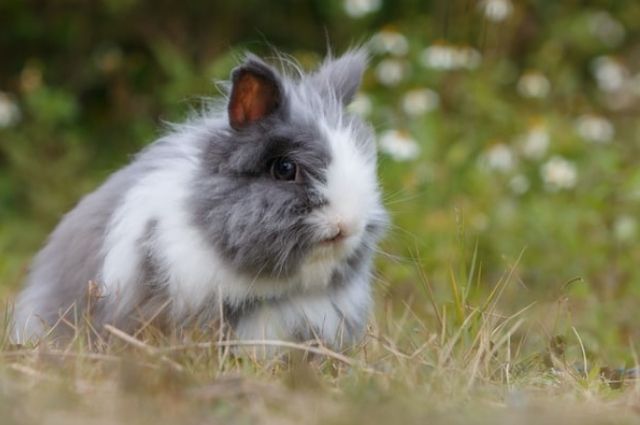Providing an expectant rabbit doe with a proper nesting box helps ensure a safe birthing environment for both her and her kits. A nesting box allows the doe to satisfy her instinct to dig and fluff bedding material as she prepares a nest. It also contains the mess of straw, fur, and other materials she will gather.
Preparing the box 1-2 weeks before her due date gives her time to become accustomed to it. The box should be roomy enough for the doe to move around in but cozy enough to retain heat. Place it in a quiet corner of her hutch or cage, lined with several inches of bedding material.
Provide extra straw, timothy hay, shredded paper, or even cotton balls which she can arrange into a nest. Setting up the proper nesting accommodations helps the doe feel secure as she cares for her new litter.
In this article, we will explore the ins and outs of preparing the rabbit nesting box. Without further ado, let’s get started.

Do Rabbits Need a Nest Box?
Providing a nest box for your pregnant rabbit doe is highly recommended. In the wild, rabbits dig burrows to give birth, which allows them privacy and protects the kits. Domestic rabbits retain this instinctual nesting behavior.
Without a proper nest box lined with bedding material, the doe may become stressed trying to find a suitable nest spot. She may end up kindling in a corner of her cage, risking exposure and chill for the kits. The enclosed space of a nest box lets the doe gather nesting material like hay and fur to arrange into a cozy, insulating nest.
This helps keep the kits warm and safe. Allowing her a box to kindle in reduces risky behavior and unnecessary energy expenditure. Ensuring she has a proper nest box set up in advance leads to less stress and better care for the kits.
When Should I Put The Nesting Box In The Cage?
Here are some tips on when to put the nesting box in a pregnant rabbit’s cage:
- Ideally, provide the nesting box 1-2 weeks before the expected due date. This gives the doe time to get accustomed to it being in her space.
- Don’t wait until right before kindling to introduce the box. She likely won’t use an unfamiliar object at the last minute.
- The box should be placed in her cage by 28 days into the 31 day gestation period. At this point, her instincts are kicking in to start preparing for birth.
- Watch for signs she’s getting ready to kindle, like gathering hay and fur, seeming restless, or acting territorial. Put the box in as these behaviors start.
- Some Does may ignore the box until just a day or two before kindling. As long as it’s introduced in plenty of time, leaving it available increases the chances she’ll use it.
- Once she kindles, don’t disturb or move the box unnecessarily. This could cause her to abandon or harm the kits.
Providing the nest box a couple of weeks ahead of time allows her to inspect it thoroughly and decide to use it for birthing and nursing her litter. It’s an important way to support her natural behaviors.
What Can I Use For A Rabbit Nesting Box?
Before going to the preparation phase, I want to clarify what can you use for a rabbit nesting box. people use different types of material for the nesting box. Here is a shortlist for a rabbit nesting box.
DIY wooden nesting box
This is the most common nesting box that people use. It is so easy to make. If you have experience in the woodworking process, you can easily make it. Read the full process of making a DIY wooden rabbit nesting box.
Large wooden nesting box
These are the mini hutch style rabbit hutch. Apart from the nesting box, you can also use them for outdoor purposes.
Metal nesting box
This is another popular nesting box among rabbit breeders. If you are living in an area where the temperature is low, you should not use a metal nesting box.
Wire nesting box
This is the easiest way to make a nesting box. you need to reshape the wire like a nesting box style. I don’t recommend using a wire nesting box because there is a high chance of injury here.
Plastic nesting box
A plastic nesting box is suitable for the small to medium size rabbit. Please make sure that the quality of the plastic is good while buying. Otherwise, your bunny will destroy it.
How to Prepare a Rabbit Nesting Box?
Now come to the point. Here is the step-by-step process to make a rabbit nesting box.
Clean and disinfect the nesting box
Whether you buy a new nesting box or already have an old one, clean the nesting box first. Cleaning with water is not enough. you could use vinegar and water solution to disinfect the nesting box.
Dry the nesting box
After cleaning properly, dry the nesting box under direct sunlight. After drying, your nesting box is ready to use.
Add bedding on the bottom
You should add high-absorbing rabbit bedding like wood shaving and recycled paper to soak the urine of the baby bunny. One-and-a-half-inch bedding is enough for the nesting box. Apart from the soaking feature, it will make the nesting box comfortable.
Add some Hay or straw
You could add hay or straw to the bedding. straw is usually hard and the hay is soft. I prefer using hay to straw. Place adequate hay on the nesting box so that the pregnant doe can dig it.
Give some extra hay on the cage floor
Probably you use a hay rack for feeding hay. Yes, that is cool. You could place some extra hay on the floor so that the pregnant doe can collect and make her nest properly.

What Should You Put In A Nesting Box?
Apart from the hay and bedding, you should not place anything in the nesting box. But it depends on some other facts.
Like, if you put the nest box in a cage or hutch, she already has the other necessary supplies like hay, food, water, and bedding.
But if you are using a small wooden outdoor hutch as a nesting box, you should provide all sorts of rabbit supplies.
How to Clean your Rabbit Nest Box?
The cleaning process is straightforward. Usually, you don’t need to clean the nesting box until the bunny gives birth after providing the nesting box in the cage. The pregnant bunny will not stay all day long in the nesting box even after the birth of the baby.
So, you need to clean the nest box when it becomes too messy with urine and poops. To clean the nest box, just change the hay and bedding. Don’t wash the box with water.
Final Thoughts
Long story short, comfort is the key to preparing the nesting box for the rabbit. Don’t compromise with the comfort and safety of the nesting box. otherwise, your baby bunny will be at risk.
I prefer to use an insulated nesting box for the doe bunny. This is the most secure type of nesting box I have ever seen. Also, you could use a DIY wooden nesting box.
Also Read:
Recent Posts
You may have already adopted a bunny or are planning to get one. Rabbits are a great source of pleasure for a family, especially children. They are peaceful and need moderate space for...
Perhaps, you have already adopted a bunny and now looking for an effective suggestion for a rabbit cage setup. Well, setting up a rabbit cage is not a difficult task indeed. If you have the proper...
